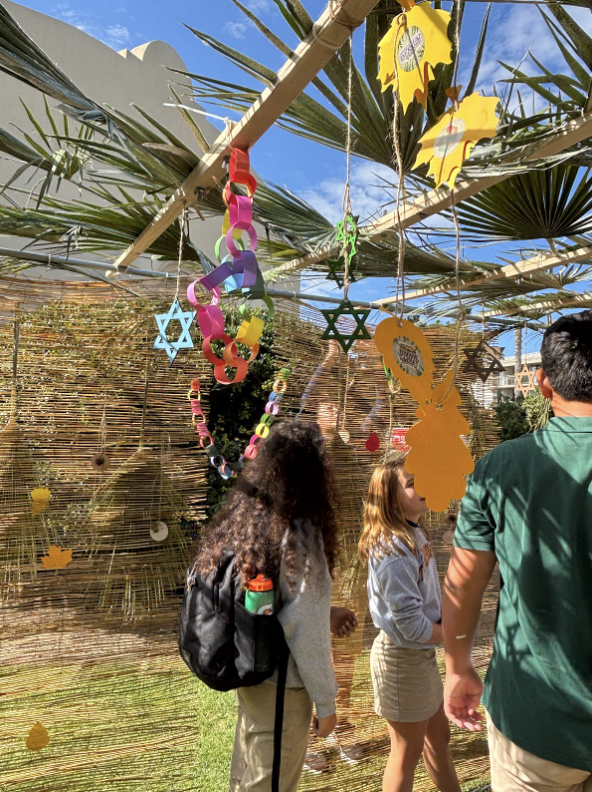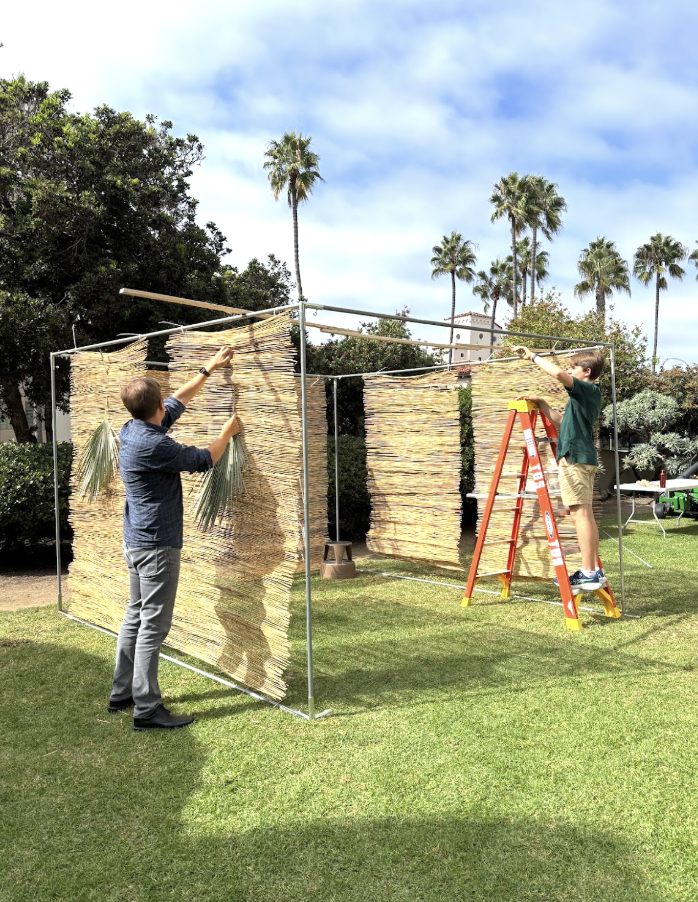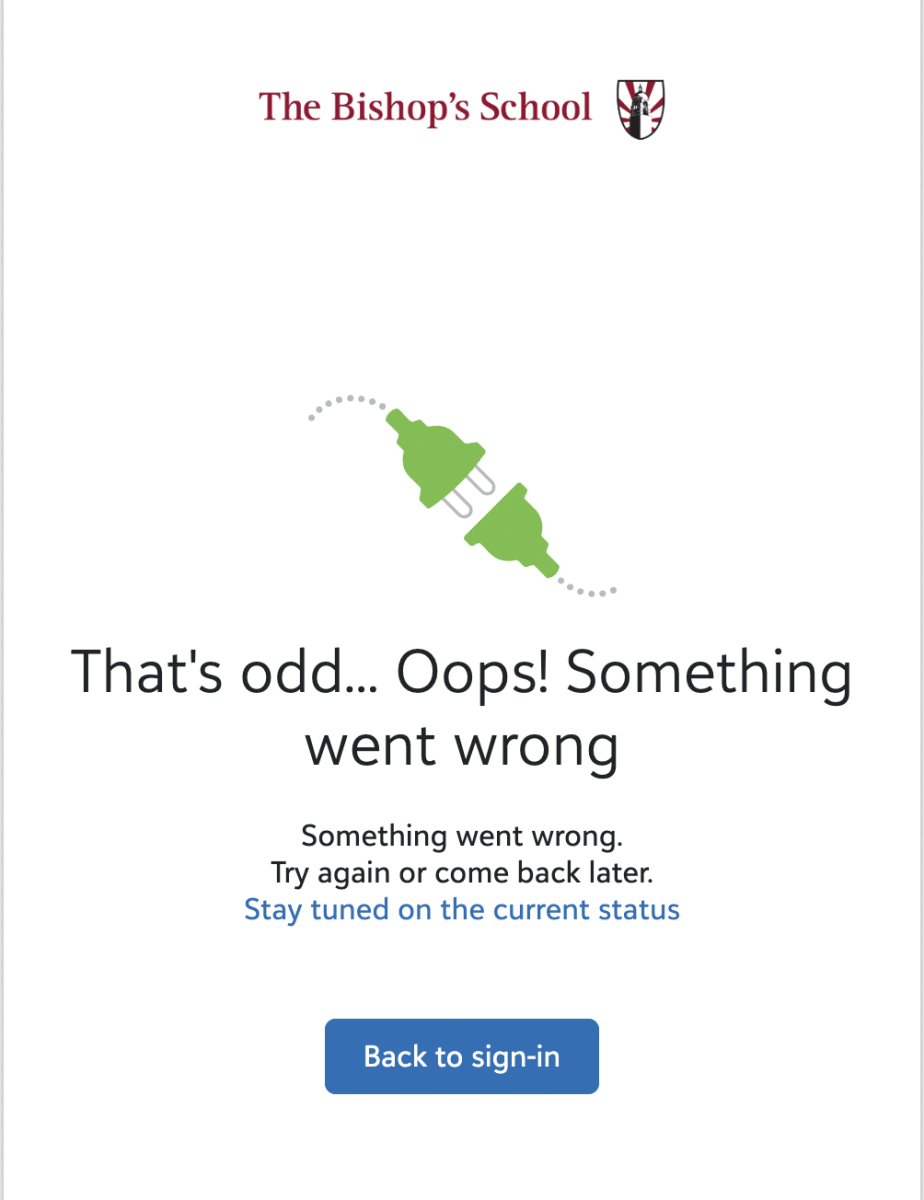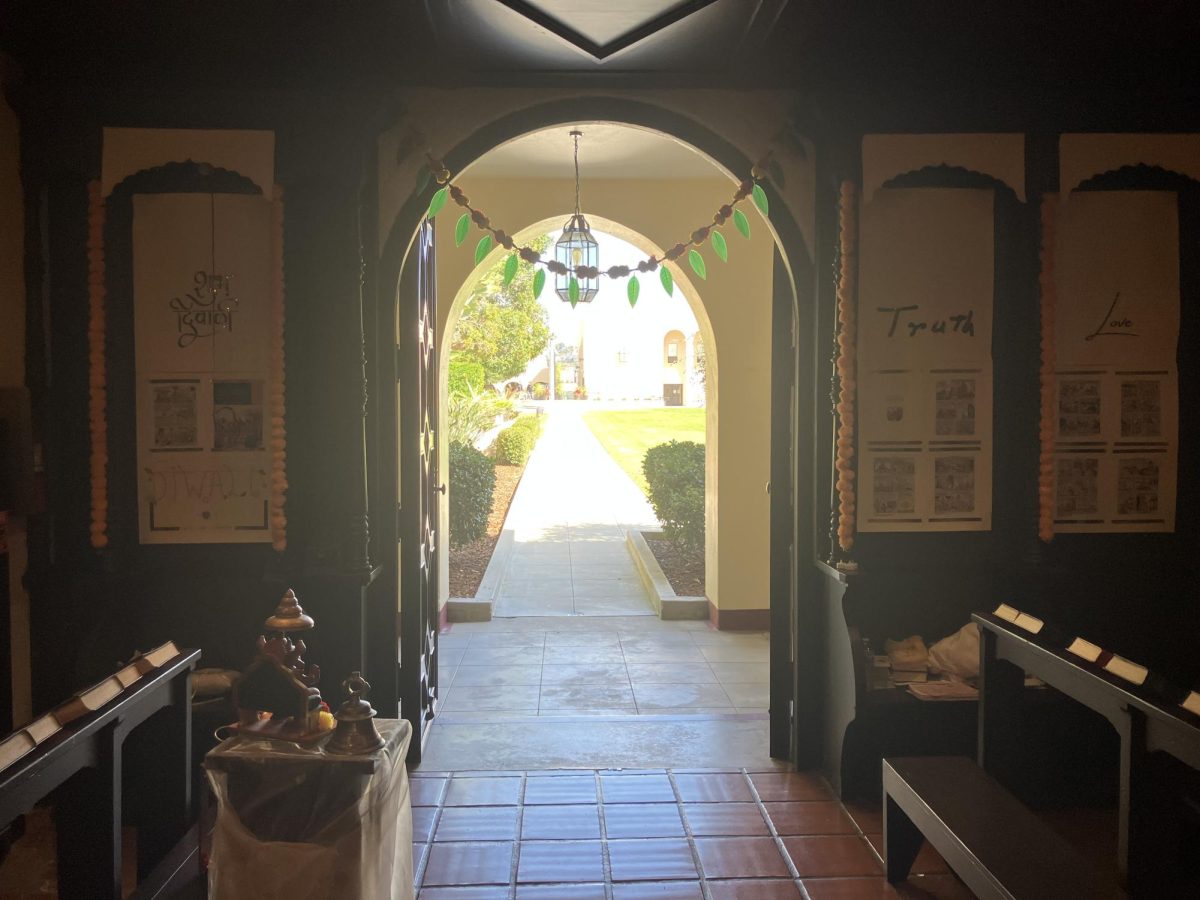“What’s a sukkah?” asked Dance Teacher Mrs. Yvette Luxenberg, sitting in front of the colorfully decorated structure lined with palm fronds and reeds, facing a group of seventh graders. “A tent,” one student responded. “It’s an outside tent and you can eat in it,” agreed Mrs. Luxenberg. “Why would we do such a thing?”
Mrs. Luxenberg was explaining Sukkot, the Jewish harvest festival celebrated by building and dwelling in these temporary sukkahs. Sukkot, which was celebrated this year from October 6th to October 13th, comes just 5 days after Yom Kippur. Considered one of the holiest times in the Jewish faith, the two holidays are centered around atonement and forgiveness, allowing Jews to reflect on themselves and their actions.
Mr. Matthew Valji, a history teacher and the faculty advisor to the Jewish Student Association (JSA), explained, “One of the important things about Yom Kippur is that it helps Jews reflect on the fact that we’re not perfect.” He acknowledged that sometimes people fall short of their expectations. Yom Kippur serves as a time “to reflect on who they need to apologize to and how they might want to treat people better in the coming year.” On this day, many Jews, such as Mr. Valji, attended synagogue for prayer services and also chose to fast from the night Yom Kippur started through the following night.
Zachary Haubenstock (‘28), the co-president of JSA for the past two years, said, “A big element of the holiday is to abstain from food and water as well as other luxuries from sunset to the next day’s sunset.” He also described Yom Kippur as a day to reflect on mistakes, not personally, but collectively, so that no person feels as if they are alone in their sins. The Vidui, which translates to confession, is “part of the service is framed in song and blessing and includes admitting the past years’ mistakes,” Zachary explained.
Many Jews at Bishop’s also expressed the uniqueness of the School’s involvement in Jewish holidays. As a high schooler at a San Diego public school, Mr. Valji recalled the difficulty of celebrating Yom Kippur, which involves fasting and long synagogue services, while also balancing school commitments.
Most public schools continue to hold classes rather than observe Yom Kippur as a holiday, including San Diego’s largest school system—San Dieguito Unified High School District—which is the second largest in California and operates 226 schools.
Mr. Valji also commented that taking the day off was a way for Bishop’s to show inclusion towards the Jewish community. “Bishop’s giving the day off is a meaningful difference for Jewish students compared to most Jews in San Diego who go to public school,” Mr. Valji added.
Antisemitism was another issue noted by Religion and Ethics Teacher and the Director of the Global Education Initiative Dr. David Moseley. “We are all aware of the tragic increase in antisemitism in recent years, and how many of our Jewish students and families, faculty and staff have to struggle with daily anxiety about safety and security,” Dr. Moseley said. “Allowing everyone to fully embrace and live out their religious, ethnic, and cultural identities—and inviting others to experience and learn about that identity—is one of the greatest antidotes to prejudice and discrimination.”
Dr. Moseley and Zachary also described how highlighting Sukkot and other cultural celebrations at Bishop’s has major effects on cultures. Zachary shared that “Jews are the target of nearly 70% of all religiously motivated hate crimes reported to the FBI in 2024, although they only make up 2% of the US population.” He later explained, “If people learn more about different people and their cultural/religious practices, they are less likely to be swayed by misinformation.”
Dr. Moseley remarked, “With any religious or ethnic or cultural celebration or tradition observed by members of our communities, the opportunity for all of us to learn about, understand, and appreciate what is of value and significance to other members of our community is meaningful and precious.”
Sukkot, which was just five days after Yom Kippur this year, succeeds Yom Kippur as a more lighthearted holiday—the harvest festival is referred to in Hebrew as “the days of rejoicing.” On Monday, several members of the JSA, including Dr. Moseley, Mr. Valji, Spanish Teacher Doctora Marda Rose, and Zachary Haubenstock, worked together to build a sukkah, a temporary outdoor hut or booth built for the week-long Jewish festival of Sukkot.
The holiday is a harvest festival, similar to Thanksgiving, but also commemorates the Israelite’s 40 years of wandering after escaping from Egypt. Jews celebrate Sukkot by building a sukkah, a type of hut or shelter, and spending as much time as possible in it. The sukkah represents the temporary shelters constructed by the Israelites during their travels, as described in the Torah.
Jews also observe Sukkot through a daily ritual using the Four Kinds: an etrog (citron), a lulav (palm frond), three hadassim (myrtle twigs), and two aravot (willow twigs), representing four different personalities of Jews. “It’s an opportunity to connect with nature,” said Mr. Valji, referring to the traditions and ways Sukkot is celebrated.
The Bishop’s sukkah was built by hanging reed mats from a metal structure for walls, heavily adorned with palm fronds and wood beams. During well-being blocks that week, middle school students made decorations to place in the sukkah, which included stars of David, citron ornaments, paper leaves written with hopeful messages, and much more.
Throughout the week, students could eat lunch underneath the sukkah and help decorate by writing messages of gratitude on paper chains, a traditional sukkah decoration, which soon covered the entire hut. Sixth and seventh-graders also visited the sukkah during their wellness blocks.
After putting up various decorations they had made beforehand, the students sat around Mrs. Luxenberg, a dance teacher and faculty advisor of the Jewish Student Association. For the rest of the well-being block, Mrs. Luxenberg taught the students all about Sukkot, including what a sukkah is, stating that it is “To represent when the Israelites had to flee from Egypt and they were traveling through the desert, no houses, only temporary shelter.”
At the end of the week, Bishop’s students recognized the holiday season through multiple ways: not only through personal reflection and atonement, but also with hands-on learning and experience for many non-Jews.
“I think ‘doing’ is always a more impactful and effective educational experience than simply reading or talking about something,” remarked Dr. Moseley. “And it’s always a privilege when members of one religious or ethnic or cultural tradition invite others outside of their tradition to observe and share and participate in their unique heritage.”










